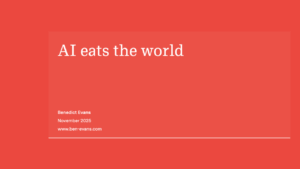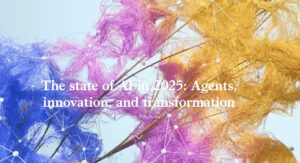
Photo by Amanda Dalbjörn on Unsplash
Frost & Sullivan released its latest analysis, “Top End User Priorities in Digital Transformation, Global, 2019.”
Key findings include:
- The retail (44%) and transportation (43%) sectors are ahead of others in their digital transformation.
- More than two-thirds of companies feel that the sales and marketing department will be the most impacted department by their digital transformation.
- Enhancing customer experience, digital presence, and sales and marketing effectiveness are the three major drivers for IT/telecom investment over the next two years.
- Improving operational efficiencies is a top priority in Asia-Pacific and Latin America, while upgrading customer experience and satisfaction is the most important corporate goal in North America and Europe for 2020.
- Malware (41% of companies) remains the greatest security threat, followed by security misconfiguration and hacking. Malware is common in both smartphone and desktop platforms.
- Internet of Things is being used by 65% of companies. Almost 42% of organizations are developing IoT through a third-party service provider. Government is the predominant developer of IoT in-house.
- IT and communications, finance, banking, and insurance are the top industries implementing artificial intelligence.
- Cost of integration remains a major setback for the adoption of new digital technologies.
My friend Macy Bayern of TechRepublic reached out to talk about the digital transformation trends for a story she was writing for TechRepublic.And as always, it led to a fantastic conversation. Parts of our discussion made it into her article, “Top digital transformation priorities in the enterprise.”
I also wanted to share the unabridged transcript with you here.
Why are retail (44%) and transportation (43%) sectors ahead of others in their digital transformation? In what ways are they digitally transforming?
Frost & Sullivan define digital transformation in a very traditional sense, which emphasizes the “digital” side of change. Retail and transportation are among the most important sectors in the economy. In this regard, retail is under tremendous pressure to update and upgrade systems because of what I call “digital Darwinism,” the effects of technology on rapidly evolving markets and also the digital evolution of customer behaviors and expectations. The same is true for transportation. Across most transportation industries, the movement of people and products is vital, yet much of the infrastructure is legacy-based, i.e. outdated. Digital transformation is a critical enabler of not only modernization but also performance, security and scale. Everything is accelerating and will do so whether organizations keep up or not. This is why disruption is so pervasive. It has no agenda.
How will sales and marketing teams be impacted by digital transformation?
Sales and marketing are already impacted by digital transformation because of outside-in influence. Digital transformation isn’t an option nor is it a checklist of adopting cloud, AI/machine learning, personalization, mobile, data, omnichannel, localization, IoT, platforms, etc.
Early in my research, 2012-2015, CMOs were leading digital transformation because of the rapid evolution of customer behaviors. Social media, mobile devices, popular apps and services, transformed how customers go through the journey and make decisions. CX immediately rose to the top of the investment list, compelling CMOs to rapidly upgrade customer-facing touchpoints and also back-end systems to integrate and personalize experiences. This forced IT to expand its role in digital transformation to partner with CMOs and integrate technology investments across marketing and other corresponding functions.
Digital transformation is more than “digital” change, it’s retooling and reimagining what it means to do business today. Most organizations are not bold enough with digital transformation investments. They can’t keep up with customers. This opens the door to digitally-native challenger brands to disrupt markets.
With malware becoming a larger threat with digital transformations, how can companies protect themselves while digitally transforming?
Malware is not new, but it is more potent at scale. A new generation of security leadership and capabilities is needed. Threats are becoming more sophisticated and so is technology to defend against them. Many weaknesses however are still human. Security and digital literacy always struggles to keep up with employee awareness and their digital habits (good and bad). Digital transformation creates new capabilities in work, but also exposes new opportunities for threats that create a security gap between literacy, cybersecurity and employee practices.

Brian Solis | Author, Keynote Speaker, Futurist
Brian Solis is world-renowned digital analyst, anthropologist and futurist. He is also a sought-after keynote speaker and an 8x best-selling author. In his new book, Lifescale: How to live a more creative, productive and happy life, Brian tackles the struggles of living in a world rife with constant digital distractions. His previous books, X: The Experience When Business Meets Design and What’s the Future of Business explore the future of customer and user experience design and modernizing customer engagement in the four moments of truth.
Invite him to speak at your next event or bring him in to your organization to inspire colleagues, executives and boards of directors.





Leave a Reply